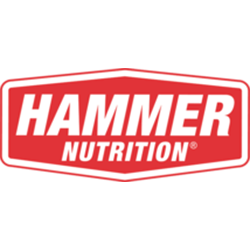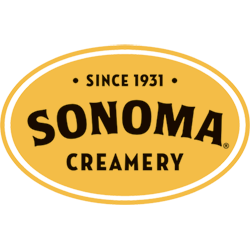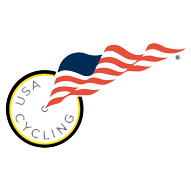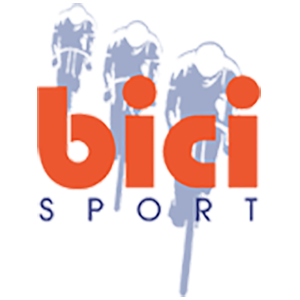Hydration is replacing uid lost during exercise. Doing it right means winning races. Do it wrong and you will lose races or even face serious medical difficulties. What you drink during a ride provides you with water, and if you use a sport drink it also gives you fuel for your muscles (in the form of sugars) and minerals to replace sodium and potassium lost in sweat.
Lance Armstrong almost lost this year’s Tour in the first individual time trial when he became dehydrated. Lance spoke about what happened. He lost almost 15lbs in body fluid. Try filling a bucket on a scale to see how much water that is. It is the amount of fluid in 20 cans of soda, or just under two gallons of milk. Lance is an expert on how his body responds to exercise, and how much fluid he needs to drink to be at his peak ability. He messed up on the day of the individual time trial. He underestimated his fluid losses in the hours ahead of the race as he warmed up because of the unusual heat and humidity. He lost a lot of time to Ulrich. The next day in the first stage in the Pyrenees he also did not perform well. He made another important point about hydration in the post race interview. If you get into trouble with dehydration, it can take several days to recover. Think about it, we are made up of millions of cells and it can take several days of fluid replacement to get them back to normal functioning. That means days where muscle, lung, and brain are not functioning at 100%. Hydration is about succeeding today, but it is also about being able to ride tomorrow. If you are doing a rest-day short ride of less than an hour, it may not matter if you drink enough, but if you are riding every day, it does.
Simple Rules On Hydration
- Use a sports drink like Extran or Gatorade since they gives you sodium and potassium that replaces what you lose in sweat. It also gives you carbohydrate (sugars) that gives your muscle the fuel it needs to function. Do not make the mistake of mixing a sport drink too weak or diluting it to make it last longer. These drinks are formulated in order to give you the right amount of fuel and minerals. Check out the Gatorade Sports Science Institute web site where much of the research on hydration is summarized: http://www.gssiweb.com/
- If you don’t like the taste of a sport drink you won’t drink it, so find one you like. Just be sure it has similar sodium and potassium and sugar content as Extran or Gatorade. Some people have trouble handling certain sugars used in the drinks and can get stomach cramps. Try several until you find one that works for you. A general rule is a drink that is around 6% carbohydrate (sugars) and has at least 100mg sodium and 35mg potassium per 8 ounces.
- For rides over an hour or very hot conditions use a sports drink not plain water.
- Before a long training ride or race, drink 17-20 ounces of water or sports drink 2-3 hours before the event. Then another 10-12 ounces 10 minutes or so before the event.
- During the event drink a sports drink at a rate that replaces your sweat losses.
- After the event, be sure to replace your fluid losses with a sport drink within 2 hours.
- A lot of fluid is lost through breathing, so even in cold weather where you don’t think you are sweating much you are still losing fluids.
When do you need extra salt?
Well everyone is different, and obviously you sweat more if it is hotter,
or if it is a long event. Lance found that out this year. When you are in a hotter environment than you are used to, after 2-3 days you start sweating more which is a sign that you are acclimated or adjusted to the new temperatures. Team Swift had that experience when they went to the Nationals in Texas and spent several days ahead of the competition training to get acclimated to the heat and humidity. When you are first in a hotter environment, the first few days you will need more salt in your diet or drinks. You can have V-8, salted pretzels, broth which is high in salt, or similar foods with a bit extra salt.
How do you know how much you sweat?
Do a one hour intense training ride and do this simple test. Do this on a harder workout day, not a rest day. Team Swift members send me your numbers and we can discuss this. This number will not be an exact number for every situation,
A very simple test.
- Before a one hour ride, go pee, then weigh yourself buck naked.
- Measure how many ounces of liquid you take with you on the ride.
- After the ride, weigh yourself buck naked before you pee.
- Measure how many ounces of uid you drank during the ride.
- Convert your weight in pounds to ounces by multiplying your weight in pounds by 16
Use this formula:
Weight before ride in ounces Minus weight after ride in ounces Minus ounces of fluid consumed
The answer is the number of ounces of fluid you need per hour to replace the fluid you lose from sweat. Redo the test for rides in different temperature conditions.
Visit the USA Track and field site and see their complete self test for optimal hydration that I simplified above. Their test applies to running, but the same principles can be applied to cycling.
The Danger of Too Much Water:
We lose salt plus water in our sweat. If you do long workouts or races there is a danger in replacing these losses with just water. You can develop a condition called “hyponatremia” which means the body has too low a salt concentration in the body fluid. It is hard to believe but athletes can die from consuming too much water. In one case a high school football team practiced in full uniform in very hot weather. Obviously they lost a lot of fluid weight. The coach told one player to go drink several quarts of water. A short time later he had a seizure and died due to this condition called “hyponatremia”. He lost a lot of sodium and potassium in his sweat, and when he drank a large amount of plain water, his body’s sodium concentration became dangerously low .
Endurance athletes must understand that fluid losses from extended exercise must be replaced with a sport drink that contains sodium and potassium. It is also important to understand how much fluid you lose per hour and not over replace it in order to avoid hyponatremia (low sodium in the body fluid). Recreational athletes or competitive athletes doing only short work outs do not need sports drinks and can just use water. If you are just doing a short criterium you won’t drink during the race so you need to focus on pre and post race hydration.
There is a great article for you to look at on Proper Hydration for Distance Running, written by the USA Track and Field Advisory Group. I have applied many of its recommendations to this web article. The link to their article is http://www.usatf.org/coaches/library/hydration/ This article I think has the best science about hydration for long distance events and applies equally well to cycling.
Note:
All advice needs to be individualized, let me know if you have questions or discuss concerns with your physician. This content represents my own opinions, and does not reflect the position of the Permanente Medical Group.
Dr. Weiss practices adult medicine at Kaiser Medical Center, in Petaluma California. He is a cyclist, and is team physician for Team Swift.














